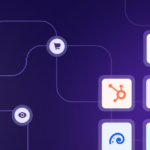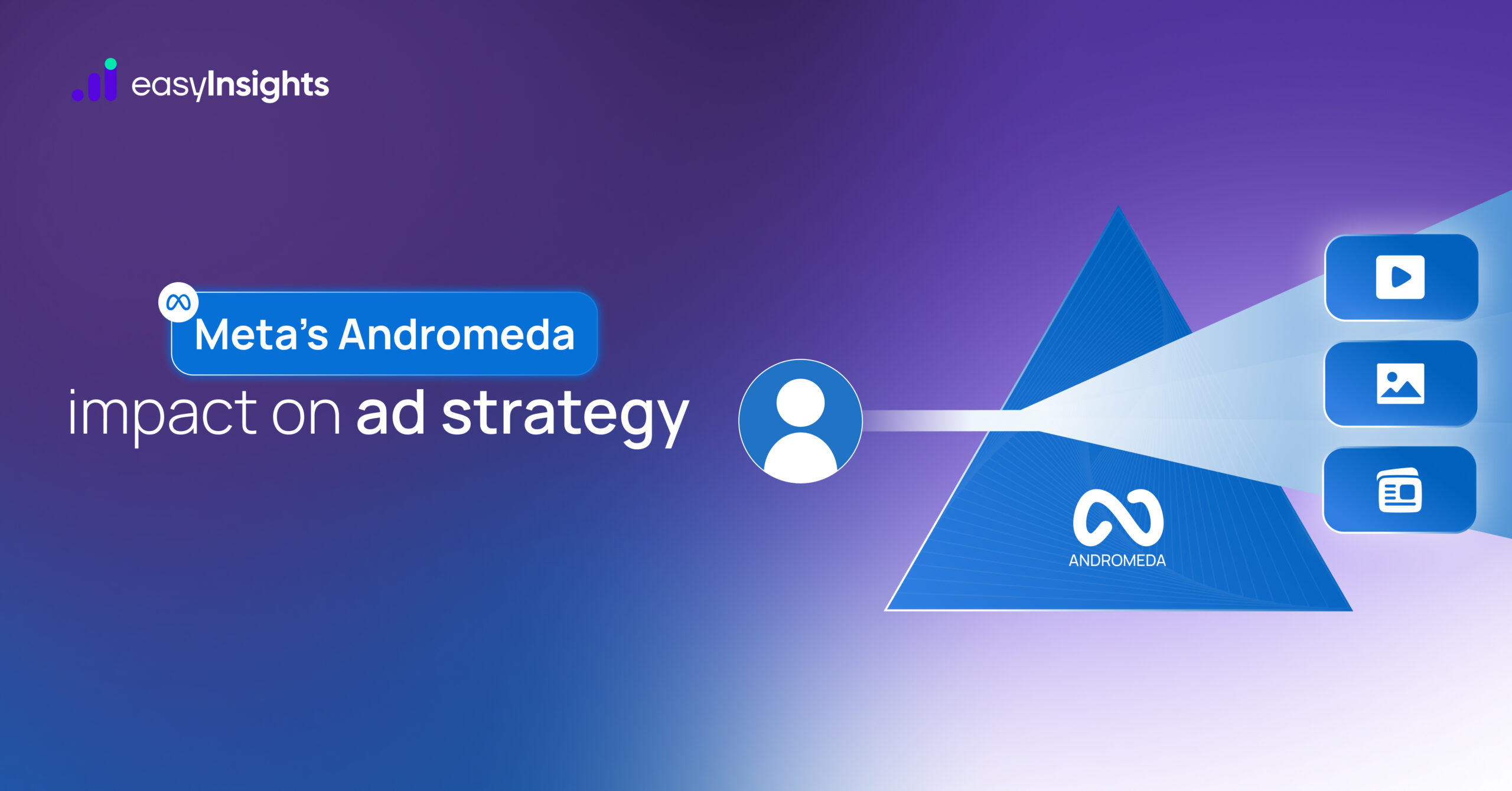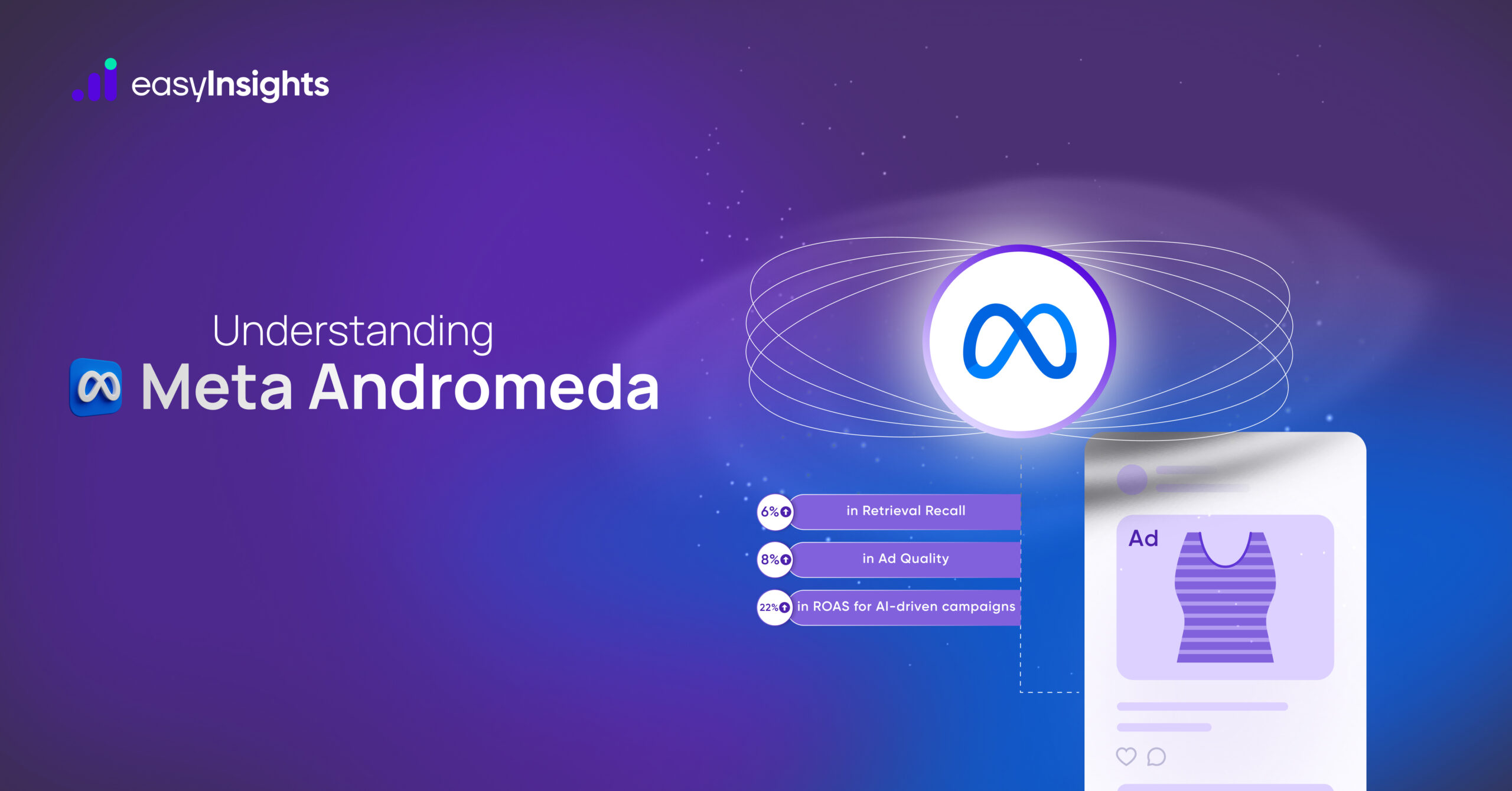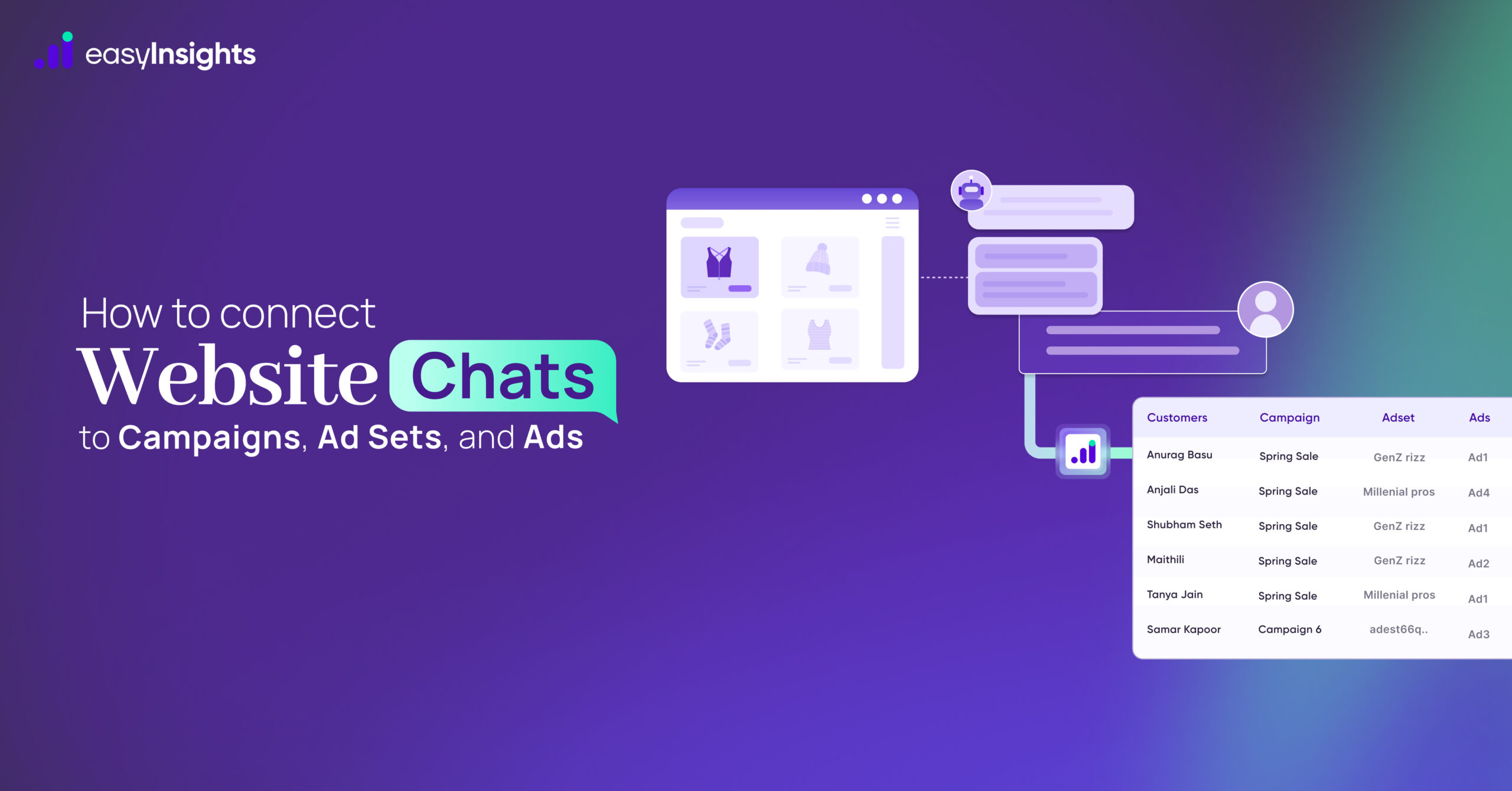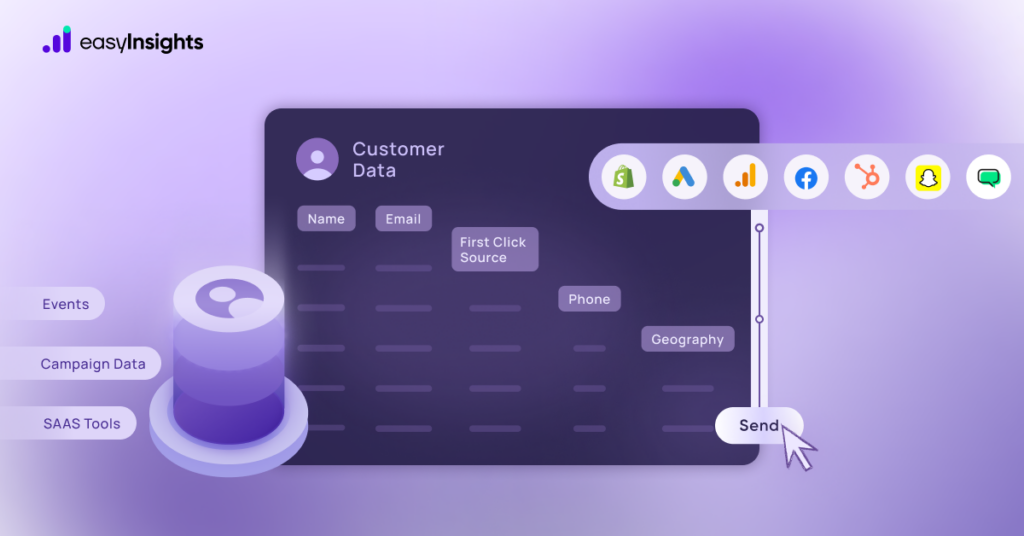
A Gartner survey revealed that 60% of marketers believe they need every data point to get a 360-degree view of their customers. For many of these marketers, Customer Data Platforms or CDP, is the go-to technology to collect and unify customer data locked in silos.
As much as CDPs are essential, the entire landscape surrounding them is quite confusing. Many solutions in the market don’t even offer half the functionalities to qualify as a proper CDP. Some are just a rebadged version of a data analytics tool.
So, to clear the clutter, we bring you this comprehensive guide. Read on to understand what exactly a CDP is and what core functionalities it must have.
Jump ahead to:
What Is a CDP?
Customer Data Platforms are a software designed to integrate customer data from various sources into a single, comprehensive database. This centralized repository enables brands to create a 360-degree view or unified profile of each customer.
By harmonizing data collected from websites, mobile apps, social media, and offline interactions, a CDP ensures that all customer information is centrally stored and easily accessible across various business applications.
You can use this data to enable personalized marketing and improve customer experiences. As a result, you are more likely to build stronger customer relationships and drive business growth.

What Isn’t a CDP? – CRM vs. DMP vs. CDP
At first glance, Customer Data Platforms sound a lot like your Customer Relationship Management (CRM) like HubSpot or a Data Management Platform (DMP). However, it differs in how it integrates, manages, and applies customer data.
A CRM focuses primarily on managing your company’s interactions with existing and potential customers. They leverage customer data such as emails, phone calls, and meetings to maintain a record of customer interactions and help improve sales and service processes.
DMPs, on the other hand, are used mainly in advertising and marketing to collect and manage cookie data and other online data for audience segmentation and targeting. DMPs are designed to handle anonymized third-party data to support advertising campaigns across various digital platforms.

In contrast, a CDP integrates data from both online and offline sources, including direct customer interactions and behavioral data, to create unified customer profiles. This comprehensive view of customers allows you to implement personalized marketing and targeted engagement strategies.
What Are Some Different Types of Customer Data Platforms?
All CDPs have the same primary function, i.e., to help marketers create unified customer profiles based on data collected from various sources. However, they do differ in how they accomplish this task.
Primarily, you’ll find two types of CDPs:
1. Packaged/Traditional Customer Data Platforms
These are the original versions of CDP. Packaged Customer Data Platforms are out-of-the-box solutions that offer functionalities like data integration, profile unification, segmentation, and activation. These platforms are designed to meet businesses’ common customer data management and analysis needs.
Their generalized approach to customer data makes them unsuitable for organizations with unique data infrastructure and proprietary tools. Moreover, they create a parallel data source outside your warehouse, making them slightly inefficient and even unsuitable from a privacy perspective.
2. Composable Customer Data Platforms
Composable Customer Data Platforms take a more modular approach, where the platform is built by selecting and integrating components or services based on specific business needs. This allows brands to create a CDP fit for their unique data infrastructure, customer engagement strategies, and tech stack.
The adoption of composable CDPs has picked up pace due to the availability of solutions like EasyInsights. Using the Reverse ETL technique, they turn your data warehouse into a CDP, allowing you to create more streamlined downstream data pipelines.
Additional Read: Composable CPDs: Some Common Misconceptions
What Are Some Essential Components of A CDP?
Be it a packaged CDP or a composable one, here are some components a CDP must have to build a comprehensive customer-360 and make it accessible across your marketing tech stack:
1. CDI and ETL/ELT Tools
A business has disparate data sources spread across channels and platforms. So, your CDP must have a mechanism to collect data from such siloed sources.
First, you’ll need a CDI (Customer Data Infrastructure) tool to collect behavioral data from first-party sources like websites, mobile apps, or smart devices. This data will help you understand how audiences interact with your product and reveal any issues they face.
Next, you’ll need ETL (Extract Transform Load) or ELT (Extract Load Transform) tools to collect data from third-party tools like social media platforms, ad networks, CRMs, etc. These sources need specialized data collection tools because they have non-uniform data structures, so data needs to be harmonized before it can be used for analysis.
Additional Reading : The Ultimate Guide to Reverse ETL
2. Data Warehouse
Once the data is collected, your CDP will need a place to store it, which, in this case, is a data warehouse. Depending on your CDP, the data may be kept in your or the vendor’s warehouse.
If you deploy a packaged CDP, the vendor will store a copy of your data in their warehouse. The CDP uses this data to build customer profiles and sends them downstream. However, composable CDPs store customer data in your warehouse and sync it directly to different tools.
3. Identity Resolution
A customer interacts with your brand or product across channels, which means your data warehouse has multiple records for each user. This is where the next component of EasyInsights, i.e., identity resolution, comes into play.
In simpler terms, identity resolution refers to the process of data unification. This component helps unify customer data by identifying and linking multiple data points related to the same individual or entity across different data sources. It ensures that each customer profile is comprehensive and devoid of duplications, providing a single, consistent view of the customer that can be accessed and utilized across the organization.

4. Visual Audience Builder
A big part of a CDP’s job is to empower marketers and sales reps to leverage customer data. However, non-tech users like you often rely on data teams to model data and create audiences for campaigns. But that’s not the case with CDPs that have a visual builder.
A visual audience builder provides a drag-and-drop interface, allowing you to model data and build audiences without code. It reduces your dependence on data teams and enables you to experiment proactively with data to improve your campaigns.
It is important to note that visual builders are mostly a part of composable CDP due to their focus on data activation. Packaged CDPs, meant for a wide range of operations, tend to use automated data models that aren’t customizable.
5. Downstream Data Sync
Another core function of CDP is to sync modeled data from the warehouse to third-party tools. Again, you have two options for a CDP’s data sync component – data orchestration and reverse ETL.
Reverse ETL is “extract, transform, and load,” but from the warehouse to business applications. It is a downstream data sync technique used in composable CDP infrastructure. You can use data activation platforms like EasyInsights to build downstream pipelines from your warehouse to your marketing tech stack.
Data orchestration refers to downstream data sync in a traditional CDP environment. It is essentially the same process as reverse ETL. But instead of syncing data from your warehouse, the data is synced from the vendor’s warehouse.

6. Privacy Compliance in Customer Data Platforms
If you collect customer data in any shape or form, it’s your responsibility to ensure the safety of the data. Given the sensitivity and regulatory concerns surrounding customer data, a CDP must help you establish procedures to help you remain compliant with privacy norms.
Here are some privacy-compliance measures that you must be able to implement in a CDP:
- Consent Management: Your CDP must have a mechanism to obtain and manage user consent for data collection and processing.
- Data Minimization: Your solution must only collect relevant and necessary data for the intended purpose.
- Data Anonymization: The CDP must remove personal identifiers from collected data so it can’t be traced back to an individual.
- Access Controls: You should be able to set up role-based permissions to control which team members can access data.
- Data Encryption: The CDP must encrypt data, whether it is in storage or transit, to prevent data theft.
Additional Read: Choosing the Right Data Activation Platform for Your Business
Build A Composable CDP with EasyInsights
That wraps this guide on customer data platforms. CDPs are essential for marketers who want a more granular understanding of customers. By giving you access to customer-360, they allow you to create personalized experiences and targeted campaigns to drive customer loyalty.
However, you don’t necessarily need a new dedicated CDP to activate customer data. If you already have a data warehouse, EasyInsights lets you create a fully functional CDP with your warehouse.
EasyInsights is a marketing automation platform with ETL and reverse ETL capabilities. It lets you collect event data from online and offline sources under one roof. You can also enrich this data with first- and third-party data and leverage real-time marketing attribution to understand your customers better.
Moreover, its reverse ETL functionalities let you sync this data back to your CRMs, ad platforms, and analytics tools without requiring any assistance from the data team.



